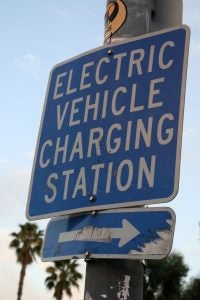California aims to hit ambitious climate goals through electrification
 It’s been a good couple of weeks for clean energy in sunny California, which continues to move buildings and transportation away from dirty fossil fuels. This increased focus is well-placed: emissions from the transportation sector remain unacceptably high, accounting for nearly 40 percent of harmful pollution in the state; buildings are also a significant contributor, responsible for as much as 25 percent of the state’s emissions. Without committing to the electrification of these sectors – quickly – ambitious greenhouse gas reduction targets in the state will be that much more difficult to achieve. Thankfully, a number of recent developments at the state level prove that California has what it takes to transform these sectors for good.
It’s been a good couple of weeks for clean energy in sunny California, which continues to move buildings and transportation away from dirty fossil fuels. This increased focus is well-placed: emissions from the transportation sector remain unacceptably high, accounting for nearly 40 percent of harmful pollution in the state; buildings are also a significant contributor, responsible for as much as 25 percent of the state’s emissions. Without committing to the electrification of these sectors – quickly – ambitious greenhouse gas reduction targets in the state will be that much more difficult to achieve. Thankfully, a number of recent developments at the state level prove that California has what it takes to transform these sectors for good.
Cleaner Cars
Recently, the California Air Resources Board (CARB) approved a plan to allocate nearly $500 million, largely funded by Cap and Trade revenue, to facilitate more electric medium- and heavy-duty vehicles. The funded projects include an electric school bus pilot, clean truck and bus vouchers and heavy-duty vehicle investments to put cleaner trucks on the road. CARB is also working to ensure that disadvantaged communities – those who are often hit hardest by harmful levels of pollution – benefit from these programs.
This initiative comes on the heels of ongoing efforts by investor-owned utilities to electrify all modes of transport. Southern California Edison, Pacific Gas & Electric, and San Diego Gas & Electric all have programs that aim to support infrastructure buildout for the, still nascent, medium- and heavy-duty transportation sectors. These pilots aim to prove the feasibility of electrifying a wide range of vehicles – including port and airport equipment, school and transit buses and fleet vehicles. Additionally, CARB and the California Energy Commission are also exploring the best way to electrify transport through building out infrastructure, rate design and electric fleet requirements.
California aims to hit ambitious climate goals through electrification Share on XPrograms like these indicate electrification makes good environmental and financial sense. Fleet owners who invest in clean equipment can see additional benefits by relying on renewable power to charge vehicles. Utilizing the abundant renewable energy that currently exists in California will not only avoid expensive curtailment, but will also avoid the need to build additional infrastructure to meet increased peak demand, ultimately lowering system costs for all customers. Using low cost renewable energy maximizes the fuel cost savings relative to more conventional fuels; in combination with available reductions in the upfront cost of the vehicle, there is a strong case to be made for fleet operators to start the transition to electricity.
The benefits of fleet electrification are already being demonstrated. The construction company XL received approval to sell hybrid electric Ford F-250 pickup trucks, which improves fuel economy by an average of 25 percent and decreases carbon dioxide emissions by a further 20 percent. UPS demonstrated the effectiveness of a wide scale transition to electric vehicles –with ramped up efforts to purchase 125 Tesla electric trucks; by so doing, it proves lowering emissions and growing business can go hand in hand.
Building Better
This action is just the latest example of a broader electrification trend in California that promotes the transition away from high-emitting fossil fuels like natural gas, not only for the transit sector but for buildings as well:
• Southern California Edison recently piloted a new project to help residents in rural places transition from propane- and wood-powered energy to electricity.
• The California Energy Commission is exploring different ways to achieve zero net energy usage through the Integrated Energy Resource Plan.
• The Building Decarbonization Coalition uses smart policies, pilot projects and regulations to make buildings more efficient and 100% carbon free.
• Assembly Bill 2195 helps determine the emissions from imported natural gas so we can better assess the climate benefits of using less gas.
• Assembly Bill 3232 assesses potential for reducing greenhouse gas emissions from buildings.
• State Bill 1477 created incentives for building owners to switch to low carbon space and water heating equipment.
Combined, the decarbonization efforts represent the commitment of California to providing a cleaner, healthier and more reliable future for its residents. Once again, the state has proven that a multi-pronged approach that relies on stakeholder input can lead to smart, replicable policies across the country.










